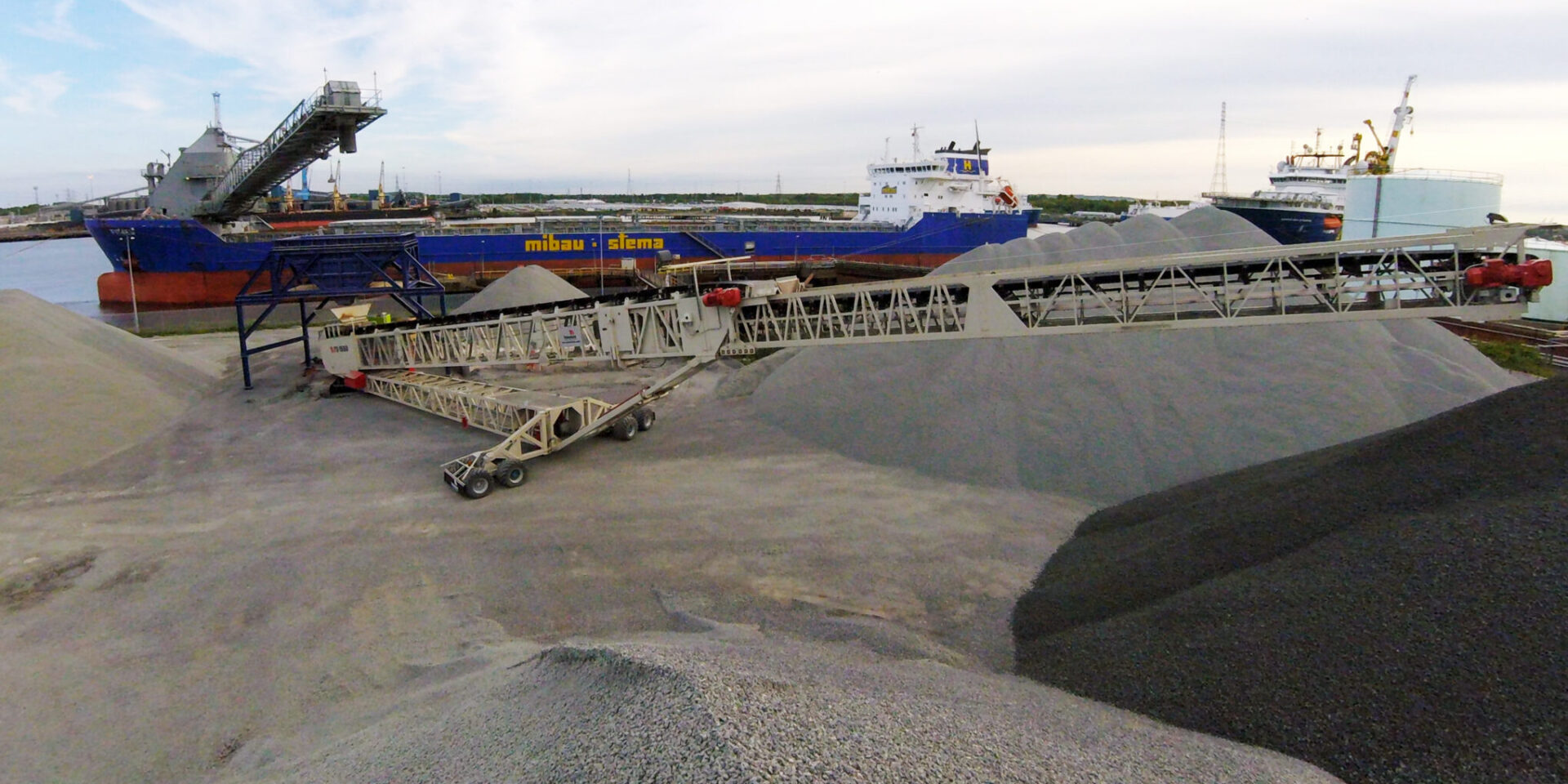The drive to extract any cost from the movement of aggregate remains a priority for any stakeholder. As a fundamental commodity in the port supply chain, the focus on how it is moved and handled continues to reduce the high level of labour and time involved in the process. While the majority of aggregates in Europe have historically been moved by truck and rail, increasing efforts to reduce environmental impacts, road congestion and pollution are driving companies to seek eco-friendly, efficient and reliable alternatives, such as marine transportation.
Transporting and handling aggregate cargo using self-unloading vessels offers significant advantages to companies seeking an environmentally responsible shipping solution. From crushed limestone to sand, gravel and stone, belt self-unloading technology offers significant advantages including reducing cost as a result of the reduced labour required to complete the process. Short sea shipping routes in the North Sea, the Atlantic Ocean and the Mediterranean provide a well-established transportation network to facilitate the process and the development of self-unloading vessels are designed to facilitate the process.
Belt self-unloading vessels are equipped with long, discharge booms and integrated conveyer belts. When aggregate cargo is discharged from the vessel, it is smoothly delivered directly from the holds along conveyer belts through the boom to shore at a rate of up to 3,000tonnes/hour and more.
It is at this point however that many Ports encounter difficulties in handling the aggregates from the discharge boom point and onwards to storage or trucks for on-going transport. Typically, this is done via a dedicated fixed hopper / conveyor system which transfers the material to the storage area. This means that the ports infrastructure needs a dedicated area for discharge, which in some cases is not feasible and limits the flexibility of the both the vessel owner/operator and the port / stevedore on shore.
In the event of no fixed hoppers/conveyor system, the material is transferred directly to the ground for handling with wheel loaders, grabs and trucks. When handling tonnages of up to 3,000 tonnes/hour, this can mean many wheel loaders, trucks operating in the boom discharge point struggle to keep up with the tonnage requirements of transferring the material away from the shore side. The self-unloading vessel has a fixed window to discharge, so this puts many pressures and costs on the shore operators to move / transfer the material as quickly as possible to ensure unloading rates are maintained.
This greatly increases the cost per tonne via double / triple handling of the aggregate via the auxiliary equipment with high fuel and labour costs. This also highlights a major safety concern working under pressure with an extensive range of equipment required in a single area during the unloading phase.
In certain scenario’s where the vessel can discharge directly to the storage area, the limited space requirements mean the material still needs to be moved, or stockpiled to maximise the current infrastructure, again causing a ‘bottle-neck’ in the handling process while increasing costs and further traffic on site. Also, this technology means the vessel or discharge boom does not have to move at any stage during the unloading process to fill the stockyard area, as the mobile unloading / stacking system is doing the material transfer saving time and labour.
Telestack offer a solution to this issue by utilising a mobile conveyor system direct from the discharge point (vessel discharge boom) to the storage area, while eliminating the need for any wheel loaders, grabs or any further resources. These mobile conveyor systems allow the equipment to be used when the vessel is berthed and the moved off-site or into the storage area, which makes it a perfect solution for multi-cargo berths who do not have a dedicated unloading facility.
The range of designs from Telestack allow for handling rates from 200 tonnes/hour to 1,000 tonnes/hour from smaller 3,000dwt to 10,000dwt self-unloading discharge vessels. The range also extends for the largest self-unloaders with handling rates from 1,000 tonnes / hour up to 3,000 tonnes / hour of aggregates. These proven designs allow for a self-propelled mobile system that can handle the smallest to the largest self-unloading vessels, all ensuring the same principles of:
- Reduce costs per tonne
- Eliminate double / triple handling at the shore side
- Remove wheel loaders / trucks and grabs from the handling process (fuel / labour)
- Improve site safety (less traffic in specific area)
- Reduce dust and emissions (all electric mobile conveyor systems)
- Direct material transfer from ‘Vessel to Stockyard’ – remove ‘bottlenecks’
The optional all-electric driven units ensure the environmental and emissions concerns are addressed in all cases, meeting stricter port regulations reducing carbon footprint. Also, further options in relation to dust enclosed conveyors systems and dust extraction can all be utilised on the equipment, depending on local regulations.
The Telestack mobile conveyor systems utilised in combination with the self-unloading vessels offers a significant advantage in offering new opportunities for ports / stevedores to establish new business and processes which will make them more competitive in their industry. By improving this process of handling the material more efficiently operators can utilise space on the shore and increase bulk tonnages through their facility.
If you need more information on our Telestack Range, or you would like to enquire now, please contact us.
To keep up to date with Cooper Handling’s latest News please follow, tweet, link or like @CooperSHGroup
